Top U.S. Locations for Canoe Fishing Adventures
For outdoor enthusiasts seeking the perfect blend of serenity and excitement, canoe fishing represents one of America’s most rewarding recreational activities. Gliding silently across pristine waters while pursuing trophy catches offers a unique connection with nature that motorized boats simply cannot match. Across the United States, countless waterways provide exceptional opportunities for anglers to cast their lines from these traditional vessels. From winding rivers flanked by towering trees to expansive marshlands teeming with wildlife, the following destinations represent the cream of the crop for canoe fishing adventures. Whether you’re a seasoned paddler or new to the sport, these locations offer unforgettable experiences where the journey is just as important as the catch.
The Boundary Waters Canoe Area Wilderness, Minnesota
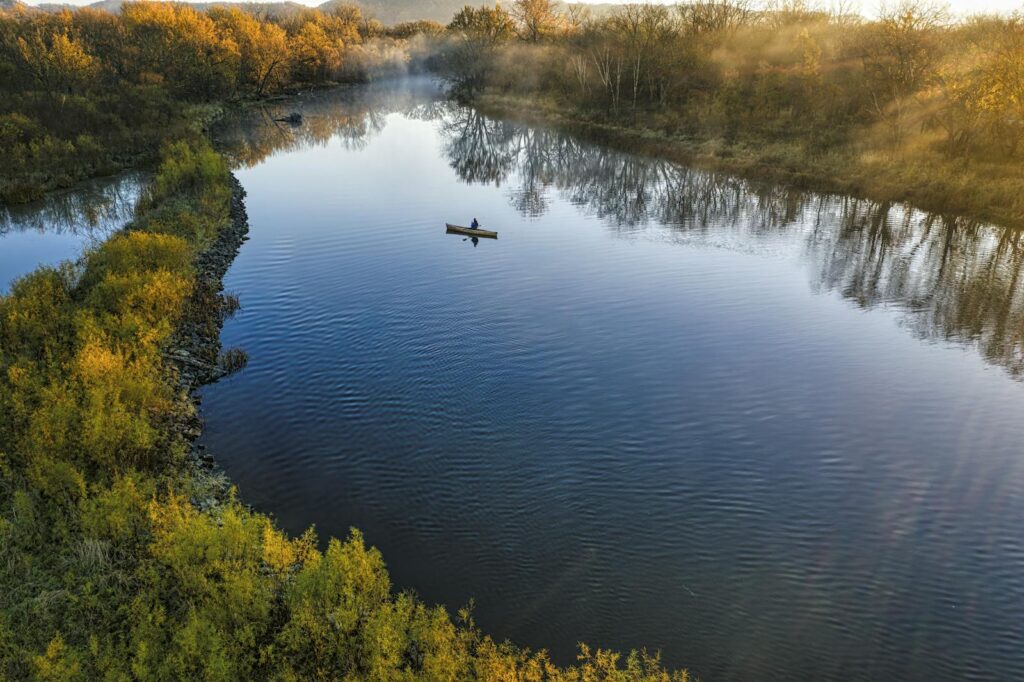
Sprawling across more than a million acres along the Minnesota-Canada border, the Boundary Waters Canoe Area Wilderness (BWCAW) represents the gold standard for canoe fishing adventures. This pristine wilderness contains over 1,100 lakes connected by hundreds of miles of rivers and portage trails, creating an unparalleled network of fishing opportunities. Anglers can target multiple species including walleye, northern pike, smallmouth bass, and lake trout in waters that range from intimate hidden ponds to expansive lakes.
The remote nature of this federally protected wilderness means limited motorboat access, creating a peaceful environment where the only sounds are your paddle dipping into crystal-clear waters and the occasional loon call echoing across the lake. Many visitors opt for multi-day expeditions, camping on designated sites along shorelines and waking to misty mornings perfect for landing breakfast.
Everglades National Park, Florida
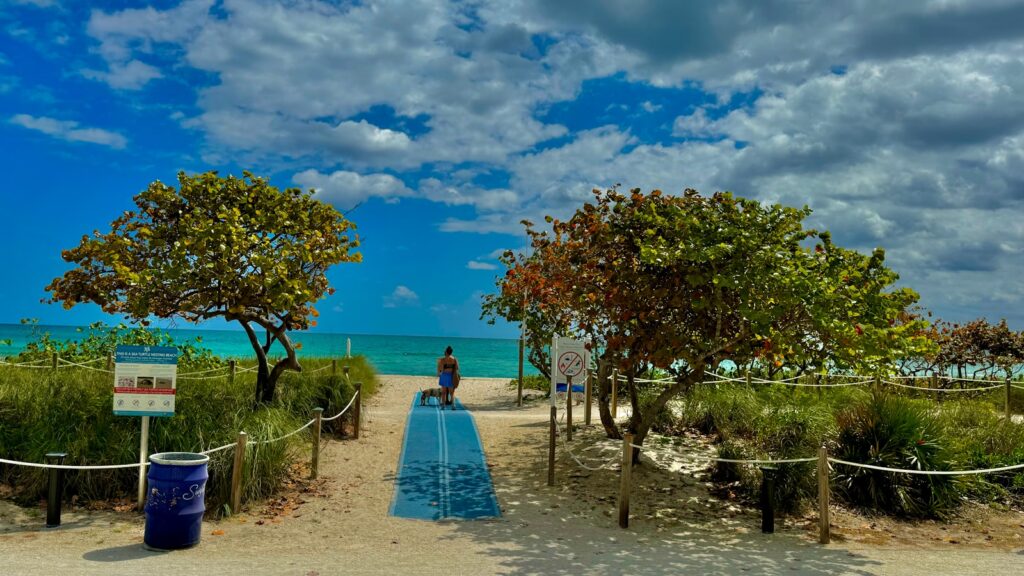
For a completely different canoe fishing experience, the vast waterways of Everglades National Park offer anglers access to both freshwater and saltwater species in a subtropical wilderness setting. Paddlers can navigate through mangrove tunnels, expansive sawgrass prairies, and coastal estuaries while pursuing snook, tarpon, redfish, and largemouth bass. The park’s designated Wilderness Waterway stretches 99 miles from Everglades City to Flamingo, providing ambitious anglers with an epic multi-day adventure through this UNESCO World Heritage Site.
Wildlife encounters add another dimension to fishing here, with alligators, manatees, dolphins, and hundreds of bird species creating a dynamic backdrop to your angling pursuits. The winter dry season (November through April) typically offers the most comfortable conditions with fewer insects and more concentrated fish populations in the backcountry waters.
Ozark National Scenic Riverways, Missouri
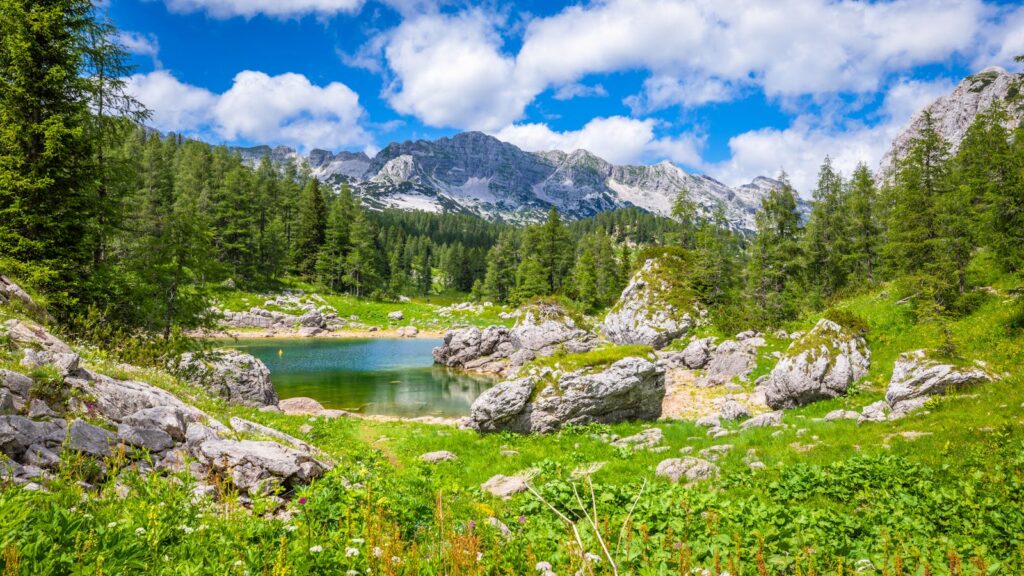
The first nationally protected riverway in America, this stunning system encompasses the Current and Jacks Fork Rivers flowing through the rugged Ozark highlands of southern Missouri. Clear, spring-fed waters maintain consistent temperatures year-round, supporting healthy populations of smallmouth bass that have made these rivers legendary among anglers. The riverways offer more than 130 miles of floatable water with numerous access points, allowing for trips ranging from a few hours to several days. Limestone bluffs, emerald-colored pools, and gravel bars create a picturesque setting for fishing adventures, while the gentle current makes these rivers accessible to paddlers of various skill levels.
Beyond the excellent smallmouth fishing, anglers can also target goggle-eye (rock bass), catfish, and the colorful native sunfish species that inhabit these Ozark streams.
St. John River, Maine
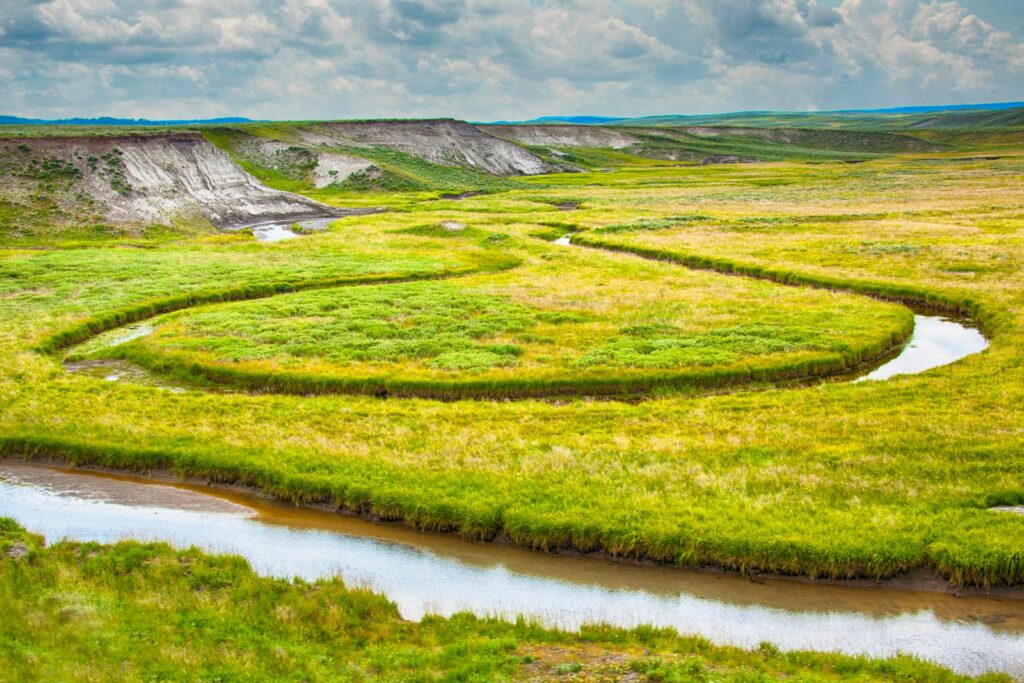
Flowing through the remote North Maine Woods, the St. John River offers an authentic wilderness canoe fishing experience in the northeastern United States. This free-flowing river stretches for nearly 200 miles, with the most popular section being the 120-mile wilderness corridor from Baker Lake to Allagash Village. Anglers can target brook trout, landlocked salmon, and smallmouth bass while navigating through pristine forests virtually unchanged since colonial times. The river features a mix of placid stretches and exciting whitewater, requiring proper planning and skill assessment before embarking on this adventure.
Spring and early summer typically provide optimal water levels for both navigation and fishing success, with brook trout eagerly rising to dry flies in the cooler headwaters. Most paddlers spend 7-10 days completing the journey, camping at primitive sites along the way and enjoying the solitude this remote region provides.
Suwannee River, Florida and Georgia

Made famous by Stephen Foster’s song “Old Folks at Home,” the Suwannee River flows 246 miles from the Okefenokee Swamp in Georgia to the Gulf of Mexico. This blackwater river offers excellent fishing for largemouth bass, redbreast sunfish, catfish, and during spring runs, the prehistoric Gulf sturgeon that can reach lengths over six feet. The tannin-stained waters flow past limestone outcroppings, cypress knees, and sandy beaches that provide perfect camping spots for multi-day adventures. The river’s upper section features a more intimate character with overhanging trees creating shaded fishing spots, while the lower section widens as it approaches the Gulf, offering different habitats and fishing opportunities.
The Suwannee River Wilderness Trail has established a system of river camps specifically designed for paddlers, featuring screened sleeping platforms, restrooms, and shower facilities spaced a day’s paddle apart.
Buffalo National River, Arkansas
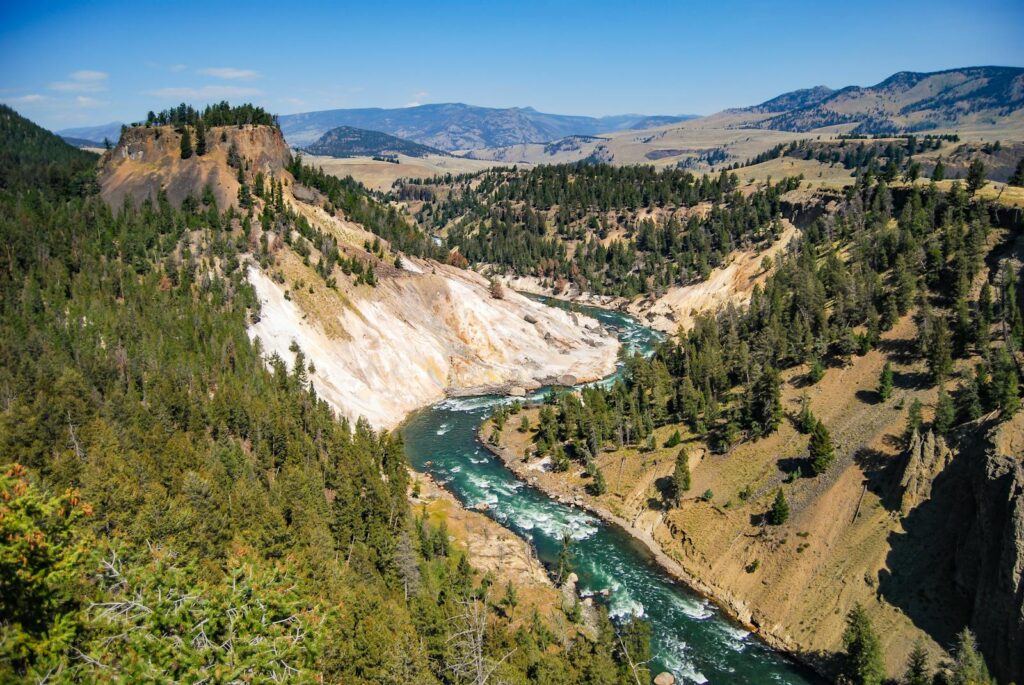
As America’s first designated National River, the Buffalo flows 135 free-flowing miles through the Arkansas Ozarks, offering spectacular scenery and excellent smallmouth bass fishing opportunities. Limestone bluffs rising hundreds of feet above the water, crystal-clear pools, and gravel shoals create diverse habitats for smallmouth bass, spotted bass, and various sunfish species. The river can be divided into three distinct sections, with the upper portion featuring steeper gradients and more technical paddling, while the middle and lower sections offer a more relaxed pace perfect for focusing on fishing.
Seasonal fluctuations dramatically affect water levels, with spring typically providing optimal conditions for both paddling and fishing success. Beyond the fishing, paddlers can explore side hikes to waterfalls, caves, and historic homesteads that dot the surrounding national parkland.
Wisconsin River, Wisconsin
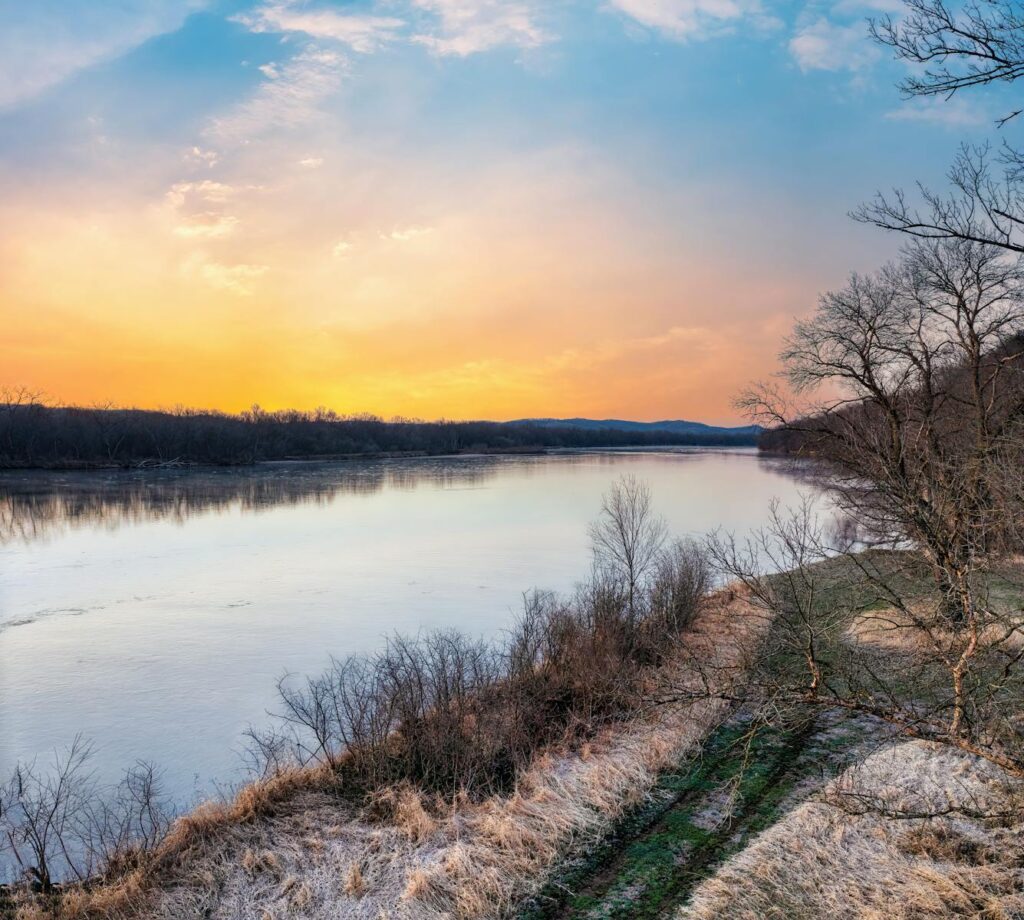
Winding 430 miles across Wisconsin from the state’s northern border to its confluence with the Mississippi, the Wisconsin River offers diverse canoe fishing opportunities through varying landscapes. The Lower Wisconsin State Riverway protects the final 92 miles of the river’s journey, creating a nearly undeveloped corridor through forests, bluffs, and sandbars perfect for camping. This stretch harbors excellent populations of smallmouth bass, walleye, catfish, and sauger that provide consistent action for anglers throughout the warmer months.
The river’s broad sandbars emerge during summer’s lower water levels, creating perfect camping spots where you can fish from dawn until dusk without ever breaking camp. The absence of dams or portages in this lower section allows for uninterrupted paddling and fishing, while the generally moderate current makes this an ideal destination for novice canoeists seeking fishing adventures.
Eleven Point National Scenic River, Missouri
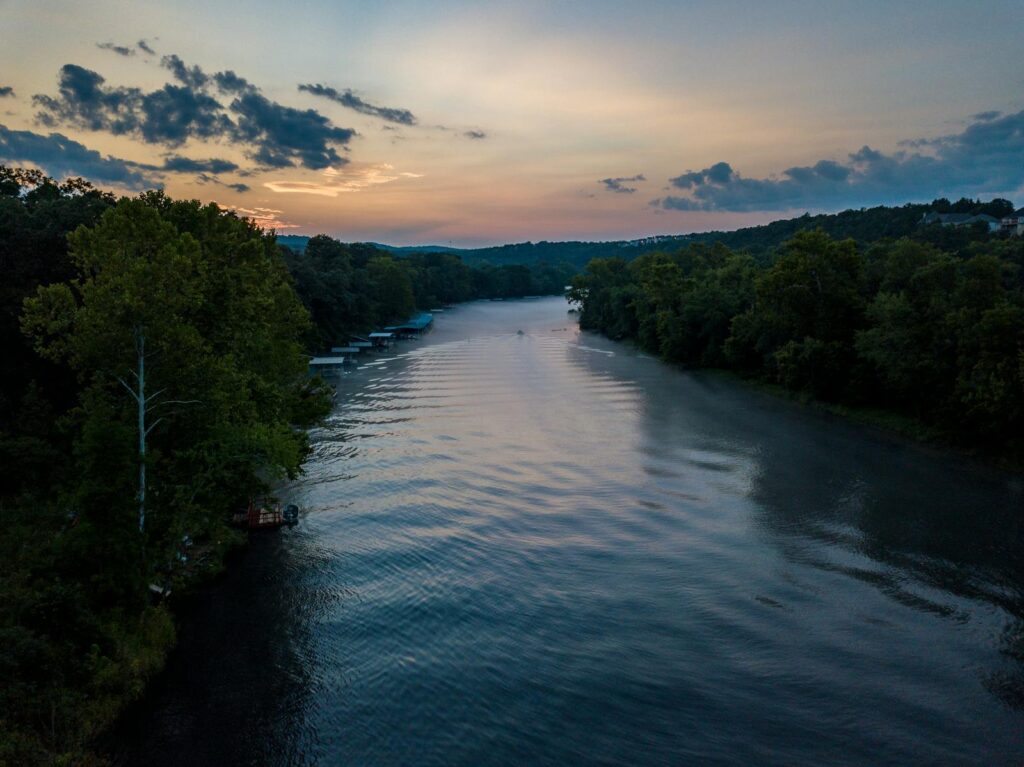
Another Ozark gem, the Eleven Point River flows cold and clear through a rugged landscape of forests and limestone bluffs in southern Missouri. Fed by numerous springs that maintain cool water temperatures, this river supports an outstanding fishery for smallmouth bass, rainbow trout, and brown trout. The 44-mile designated scenic river section offers pristine paddling through predominantly public lands with limited development, creating a wilderness feel rare in the Midwest. Deep pools, swift runs, and gravel bars create diverse habitats that anglers can target from their canoes, with each type of water potentially holding different species.
The river’s consistent flow, even during summer dry periods, makes it a reliable destination when other streams might be too low for enjoyable paddling and fishing.
Colorado River (Upper Section), Colorado
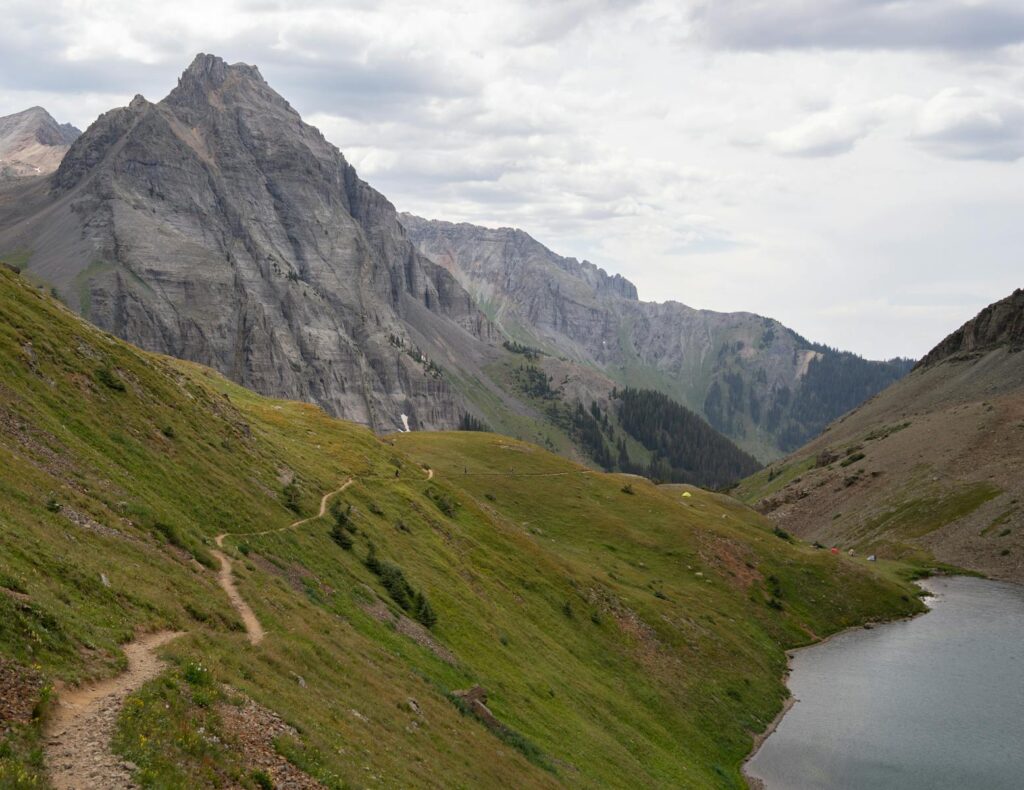
Before becoming the mighty river that carved the Grand Canyon, the Colorado begins as a small mountain stream in Rocky Mountain National Park. The upper section from its headwaters down through Middle Park offers exceptional trout fishing opportunities from a canoe during the summer months when snowmelt has subsided. Anglers can target rainbow, brown, brook, and native cutthroat trout while drifting through spectacular mountain scenery and sagebrush flats. The Gore Canyon to State Bridge section provides one of the most scenic floats, with relatively gentle water most suitable for fishing interspersed with a few modest rapids that add excitement to the journey.
Afternoon thunderstorms are common during summer months, so early morning starts are advisable both for safety and for hitting the prime fishing windows when trout are most active.
Okefenokee Swamp, Georgia

This ancient wetland spanning nearly 700 square miles in southern Georgia provides one of America’s most unique canoe fishing environments. Designated as a National Wildlife Refuge, the Okefenokee offers a labyrinth of water trails through cypress forests, prairie-like expanses, and floating peat islands. Anglers can target largemouth bass, chain pickerel, bowfin, and various sunfish species that thrive in these tannin-stained waters. The refuge maintains several canoe trails ranging from a few hours to multi-day adventures, with platform camping sites built above the water for overnight stays in the heart of the swamp.
Wildlife viewing adds another dimension to fishing trips here, with alligators, black bears, sandhill cranes, and numerous other species creating a primeval atmosphere unlike anywhere else in the country.
Delaware River, New York/Pennsylvania/New Jersey
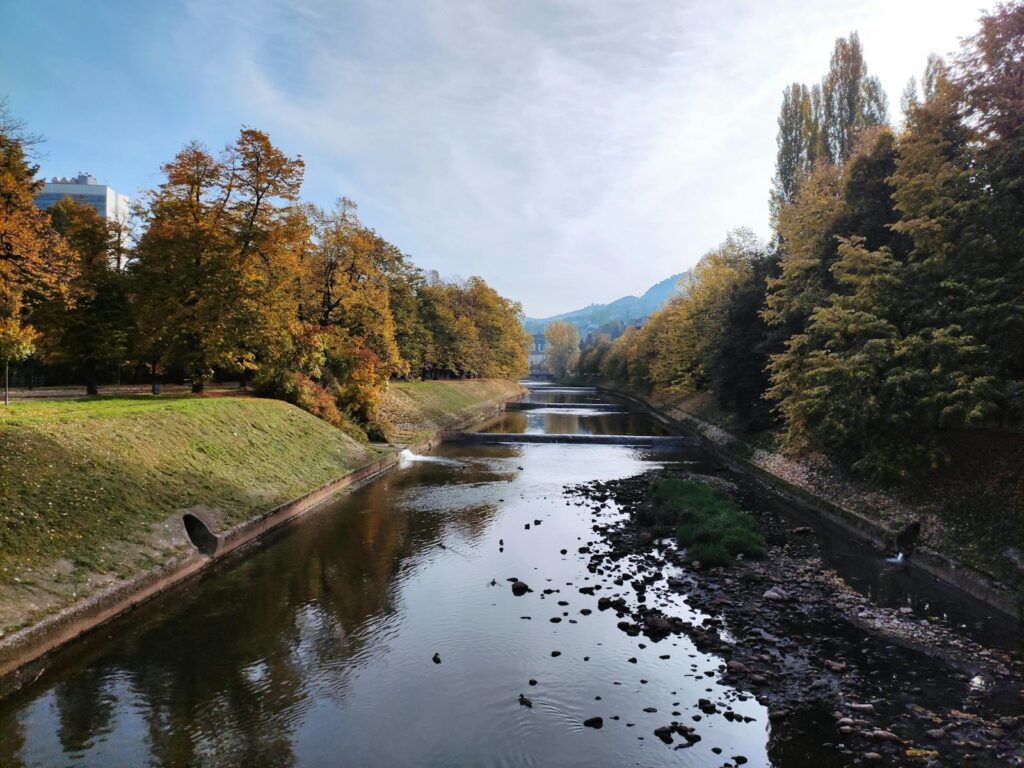
Forming the border between three states, the Upper Delaware River System offers exceptional fishing opportunities within a day’s drive of major East Coast metropolitan areas. The river is renowned for its wild trout fishery in its upper reaches and transitions to excellent smallmouth bass fishing as it widens and warms downstream. The Upper Delaware’s status as part of the National Wild and Scenic Rivers System has preserved its natural character despite its proximity to millions of people. The river features a mix of pools, riffles, and runs that can all be effectively fished from a canoe, with different techniques proving successful as conditions and seasons change.
During summer months, the clear waters allow sight-fishing opportunities for smallmouth bass, adding a visual element to the angling experience not found in many eastern rivers.
St. Croix River, Wisconsin/Minnesota
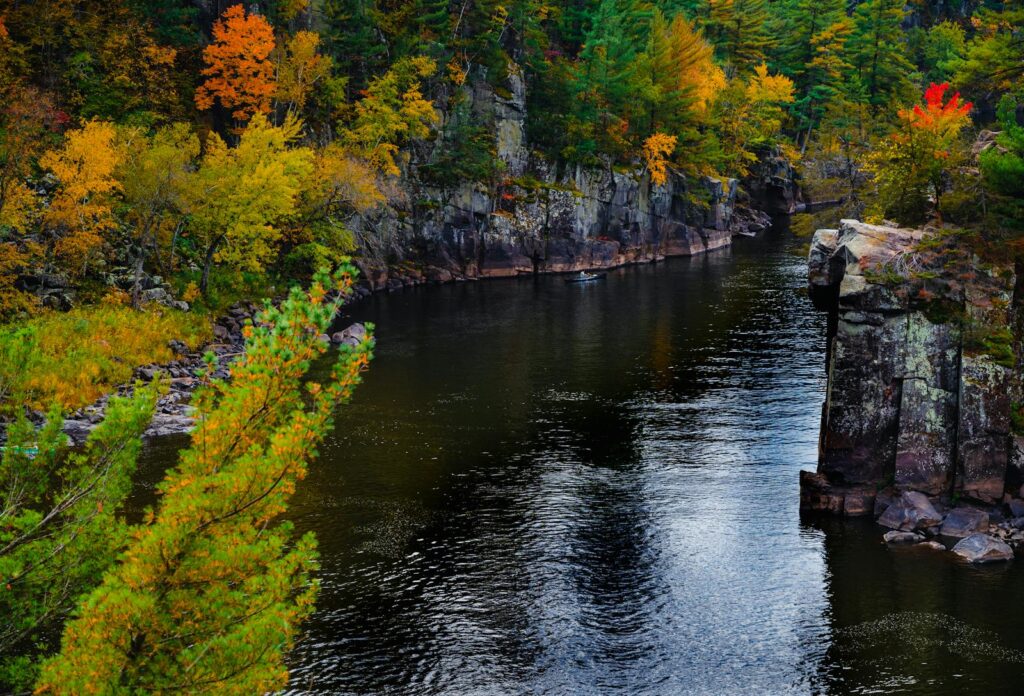
Forming part of the border between Wisconsin and Minnesota, the St. Croix River combines accessibility with natural beauty and excellent fishing opportunities. Designated as one of the original eight National Wild and Scenic Rivers in 1968, the St. Croix offers 252 miles of protected waterway with numerous access points for day trips or multi-day adventures. Anglers can target smallmouth bass, walleye, northern pike, and various panfish species while paddling past a landscape of forested bluffs and sandstone formations. The river’s proximity to Minneapolis-St. Paul makes it an ideal destination for urban dwellers seeking a quick escape without sacrificing wilderness quality.
The Dalles section features dramatic rock formations where the river narrows through a gorge, creating both scenic wonders and excellent fishing habitat in the swirling currents below.
Essential Tips for Canoe Fishing Expeditions

Regardless of your chosen destination, certain preparations can enhance any canoe fishing adventure. Always wear a properly fitted personal flotation device, even if you’re a strong swimmer, as unexpected capsizing can occur in even the calmest waters. Secure your fishing gear with float bags or tethers to prevent losses should you tip over, and pack essential items in waterproof containers or dry bags. Research your intended waterway thoroughly, understanding potential hazards, access points, and regulations before setting out. For multi-day trips, obtain the necessary permits and share your itinerary with someone who isn’t joining the expedition.
Consider weather patterns carefully, as conditions can change rapidly on water, and always prepare for temperatures that might be significantly cooler on the water than on land, especially during mornings and evenings.
Conclusion
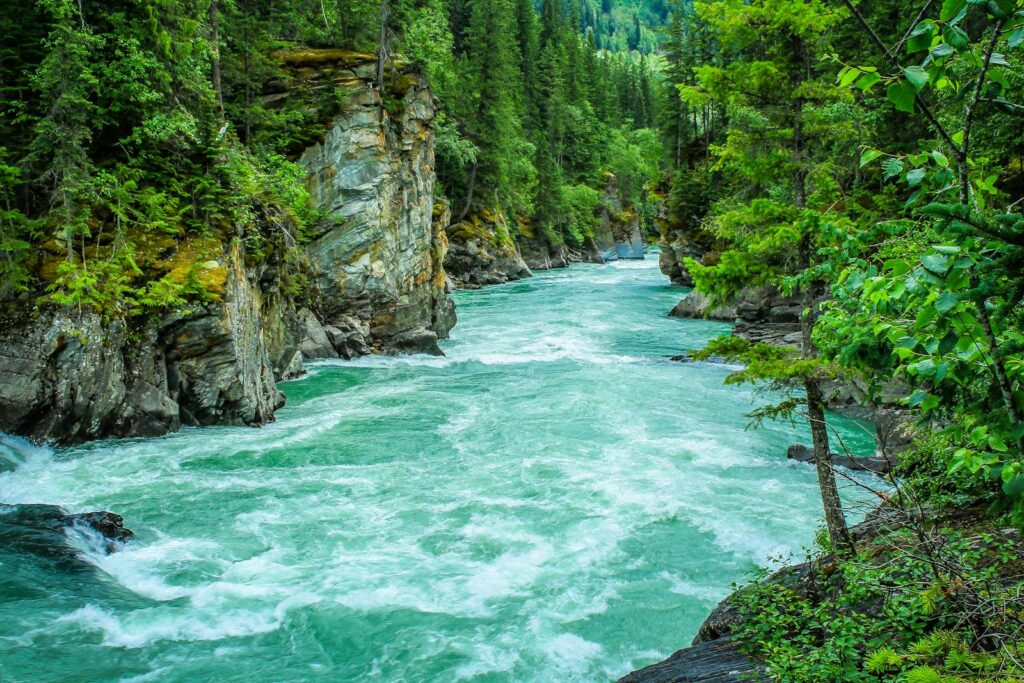
While these twelve destinations represent some of America’s finest canoe fishing waters, countless other rivers, lakes, and wetlands offer remarkable experiences for paddle-wielding anglers. The unique combination of silently approaching productive fishing spots while immersed in natural surroundings creates memories that last a lifetime. Whether you’re seeking trophy catches or simply the tranquility of casting a line from a floating perch, canoe fishing connects you with America’s waterways in a profound and rewarding way.
By respecting these special places through proper preparation and conservation-minded practices, we can ensure these paddling paradises remain pristine for future generations of canoe anglers to discover and enjoy.
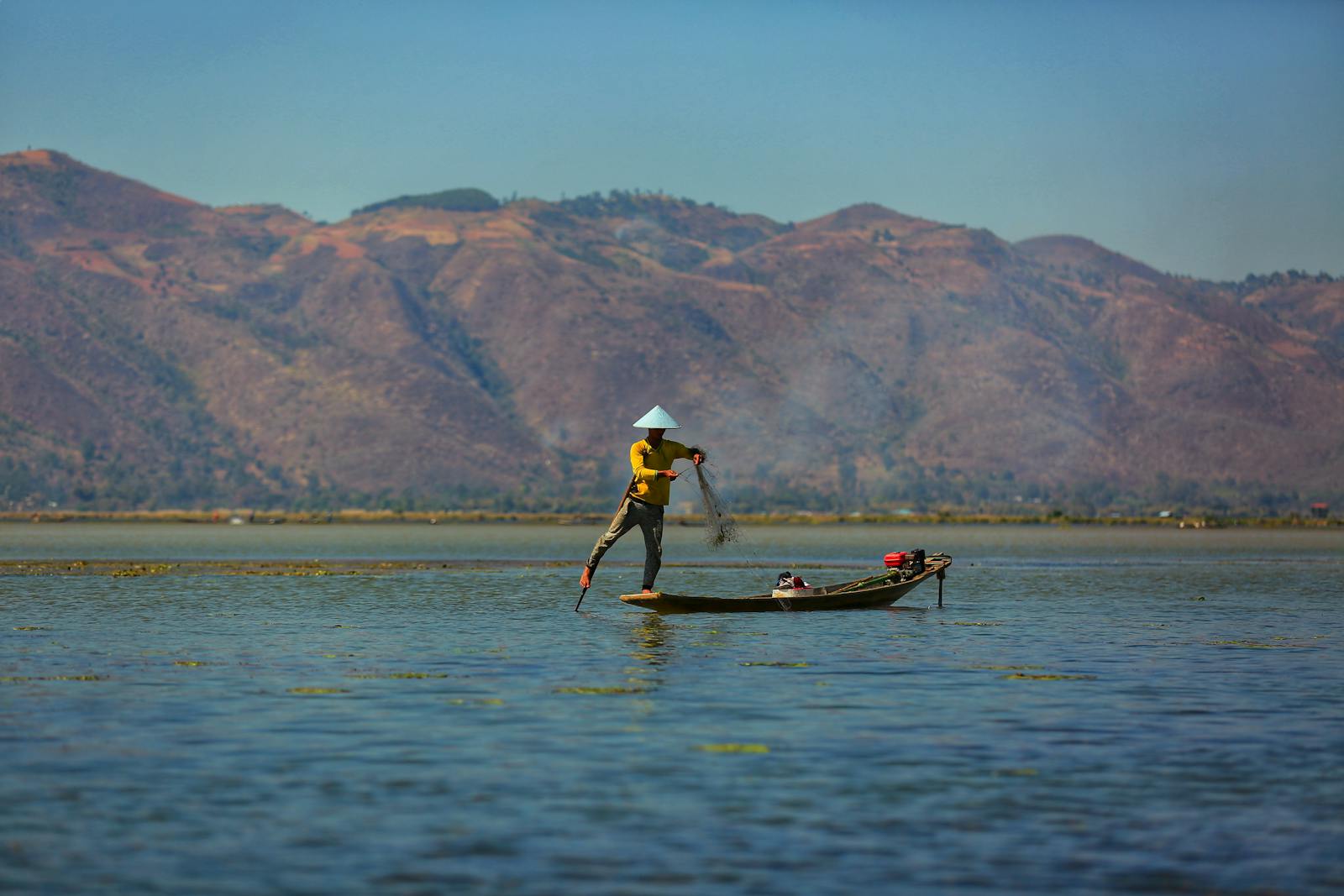

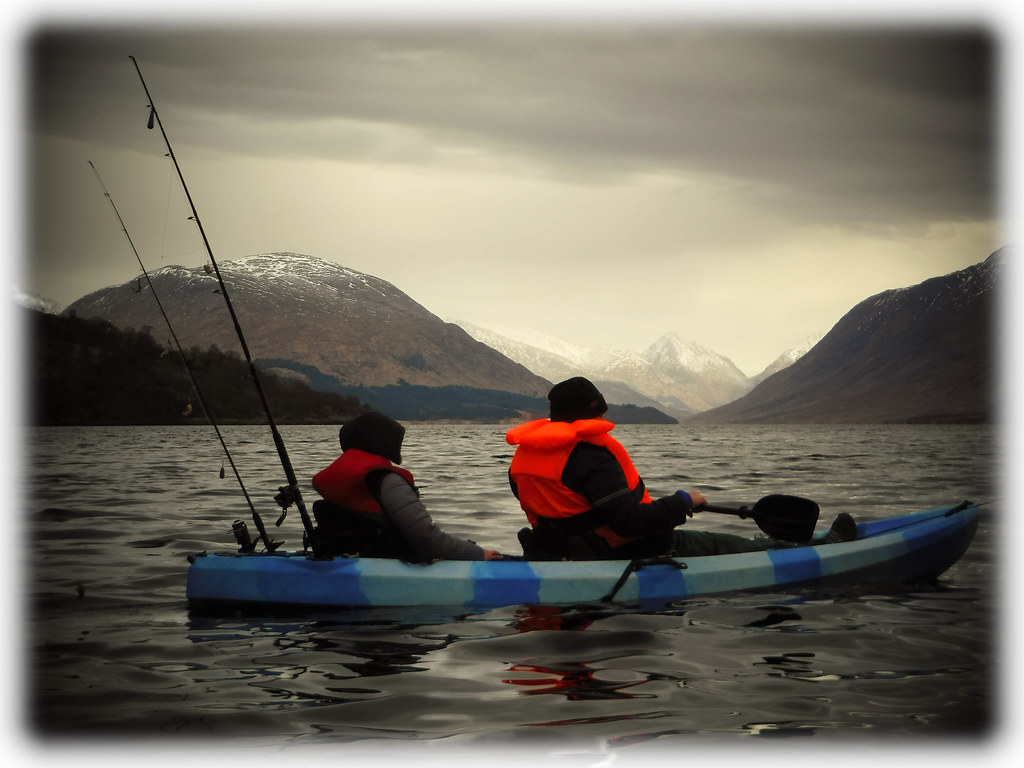











Post Comment